Table of contents
Learn more about the goddess Bastet!
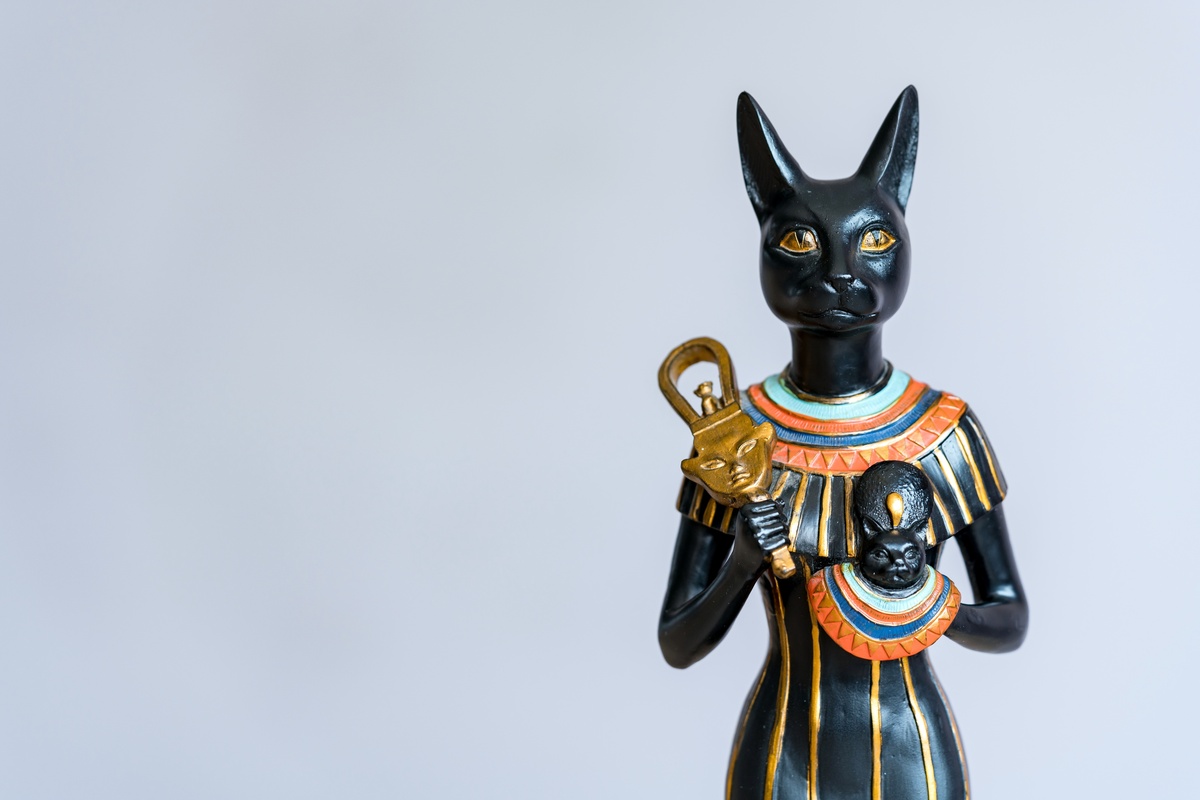
The goddess Bastet is well known for her familiarity with cats. She is a deity in Egyptian mythology very much associated with solar events, but she was also worshipped as a moon goddess after the influence of the Greeks on Egyptian culture. She is considered one of the oldest goddesses in Egypt and has always been depicted as a slim, slender woman, having the head of a domestic cat.
She is recognized for being the protector of the home, fertility, the feminine and also cats. It is believed that this deity is responsible for driving away evil spirits from children and women and can also cure them of all diseases. Learn more about the origin, history and myths about the goddess Bastet by reading the following article.
Getting to know the goddess Bastet
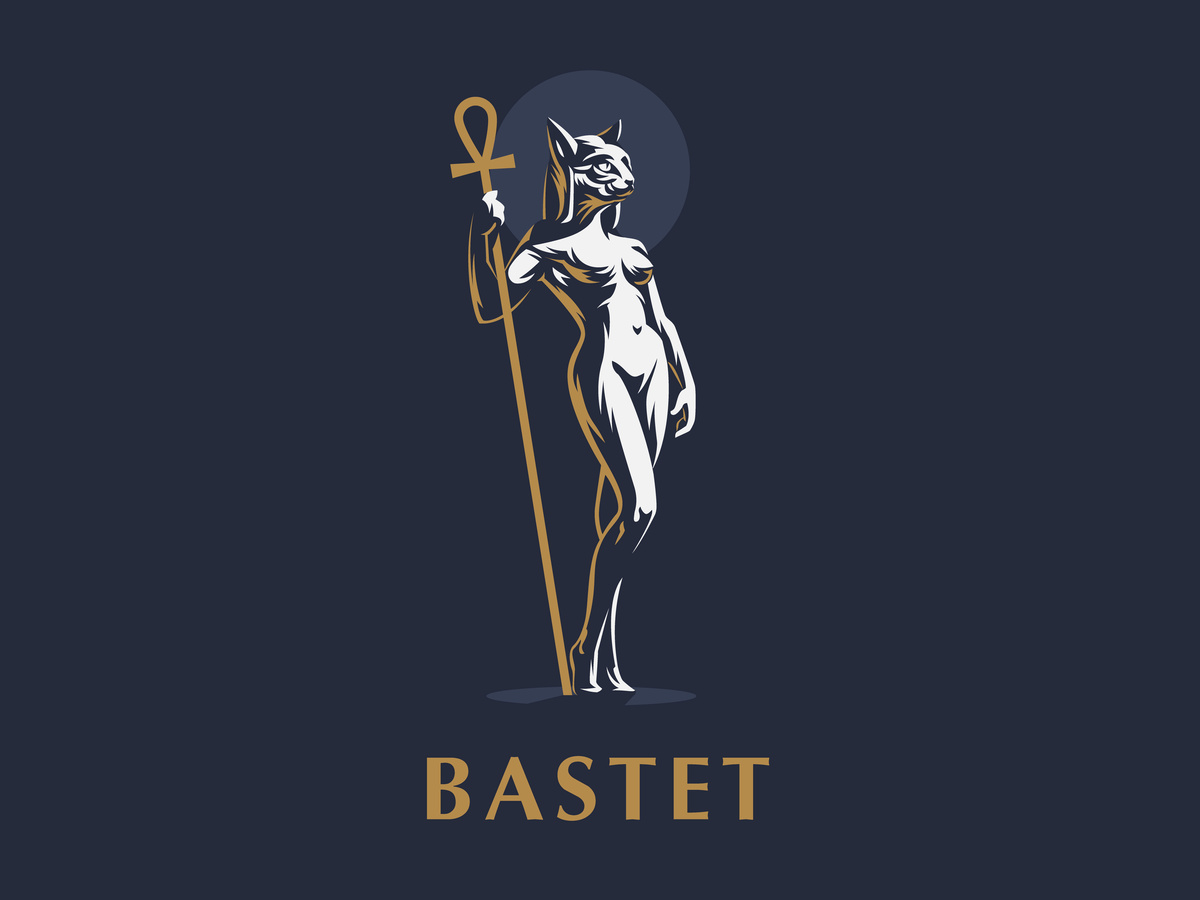
For the ancient peoples the way to understand reality was through religion, so the gods existed to favor the lives of individuals in Egypt. The goddess Bastet was much worshiped, being considered the goddess of fire, cats and pregnant women. There is a myth where she comes to be considered as the personification of the goddess Isis.
She was known as a goddess of strong personality, but who also had a gentle and kind side when it came to protecting the home. Learn below, all about the goddess Bastet.
Source
Cults for the goddess Bastet emerged around 3500 BC, initially she was depicted as a wild cat or as a lioness, but it was around 1000 BC that she began to be depicted as a domestic feline.
Visual characteristics
Her aesthetic was then, that of a beautiful woman with the head of a cat, in her representations she is often holding a sistro, a type of rattle used as a musical instrument. Therefore, she was considered the goddess of music and dance.
In other representations, in her ear there is a large earring, on her neck a beautiful necklace and sometimes she may appear with a basket, where she carried her young. In addition, she may be found carrying an Ankh, a cross from the life of the Egyptians.
History
In Ancient Egyptian mythology, the goddess Bastet was one of the deities who possessed the Eye of Ra, this because she was the daughter of the sun god, Ra. She was also the daughter of the goddess Distant, a deity who abandoned the god Ra and returned to transform the world. Bastet was born in the city of Bubastis (eastern part of the Nile delta).
She did not like to be associated with her father, as her relationship with him was not good. The god Ra considered his daughter to be very cheeky and disobedient, as she did not follow his orders.
Ra disapproved of her in many ways, he hated her when she became the moon goddess and hated her even more when she married the god Anubis and went to live with him in the underworld, since Anubis is responsible for guiding the souls of the dead to the underworld.
With Anubis she had two sons, Mihos and Nefertem. She fought bravely by her husband's side, was a warrior of enviable beauty and extremely attractive, calling the attention of all Egyptian mortals and gods.
Due to her kinship with these important gods, she was considered as a solar deity and could exercise many powers over solar eclipses. After the Greeks invaded Egypt and introduced their culture into the society, the goddess Bastet started to be related to the goddess Artemis, and this is how she stopped being a sun deity and became the moon goddess.
During the 2nd Dynasty of Egypt (2890 BC to 2670 BC) Bastet was extremely revered by women and men alike, being regarded as both a savage warrior and a helper of the affairs of domestic life.
What does the Goddess Bastet represent?
When the goddess Bastet was represented as a lioness, she was regarded more as a savage warrior, having a unique ferocity. After the beginning of her representations as a cat, which is a loving and graceful feline, she began to be recognized as an affectionate deity and protector of domestic life. Bastet is considered the goddess of music, dance, reproduction, fertility, and the goddess of the home.
Relationship between Bastet and cats
In Ancient Egypt, they believed that all cats were the reincarnation of the goddess Bastet, so they began to worship them and treat them as gods. Anyone who treated badly or hurt a cat would be committing an unforgivable sin, besides being profaning the goddess Bastet.
Since she possessed solar powers, she covered Egypt with darkness, using the moon to cover the sun, punishing those who harmed the cats. Cats were also mummified after death and were buried in places made exclusively for them.
In the city of Bubastis there were numerous temples that worshipped the goddess Bastet and her faithful would go there to pay their devotion and bury their dead cats. The city was named after the goddess since she was born there.
Relationship between Bastet and Sekhmet
The goddess Bastet can be confused with the goddess Sekhmet, who is known as the powerful goddess of vengeance and disease, and her figure was that of a woman with the head of a lioness and on top of her head was a solar disk. The lioness head signifies strength and the power of destruction.
She may also be depicted sitting on a throne with a sistro in her hands. Sekhmet was the symbol of punishment of the God Ra and feared by all his enemies.
Many Egyptians could not differentiate and dissociate the goddess Bastet from the goddess Sekhmet, believing that they were a single deity with different personalities. Thus, they said that Bastet was the quiet and kind version like a cat, while Sekhmet was the personality of the wild and ruthless warrior lioness, cruel in battles and wars.
Importance of the Goddess Bastet
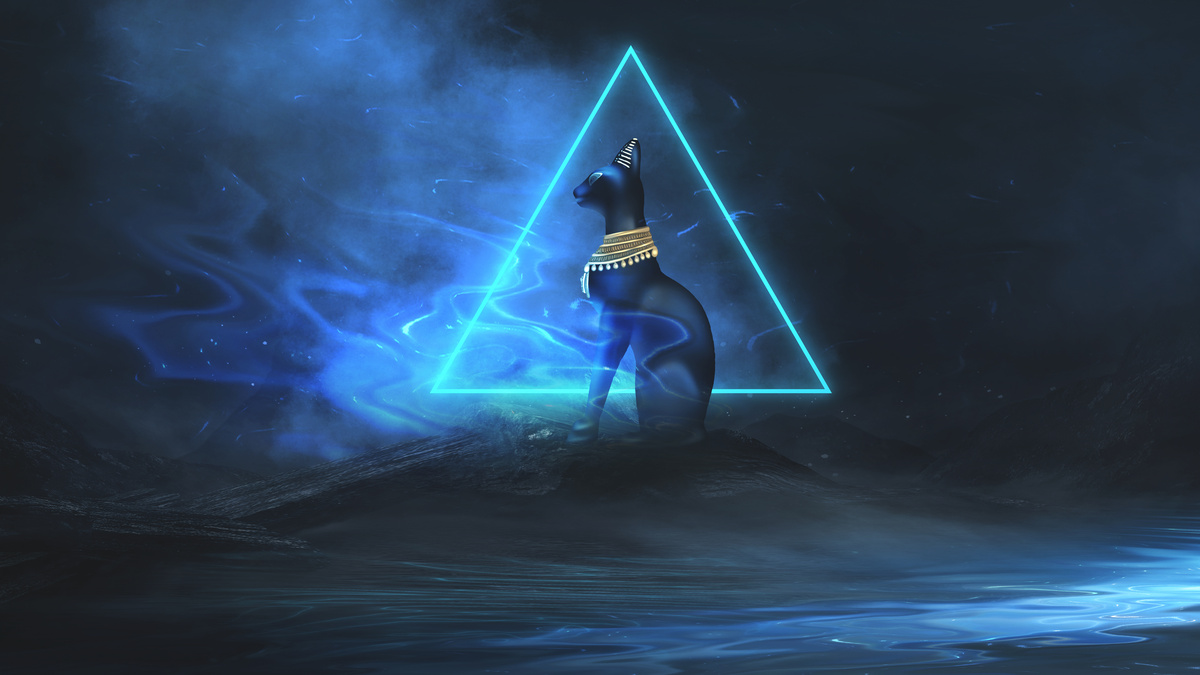
As the goddess of home, childbirth, fertility, and so much more, Bastet is very important to those who revere her, and is recognized by many to this day. Below, you will learn more about her role in Egyptian and Greek culture, as well as the cults and festivals held for her around the world.
Goddess Bastet in Egyptian Mythology
Egyptian mythology is very rich in detail and is full of important cultural aspects for the understanding of the society of the time, of course the goddess Bastet is essential within this mythology. Being the daughter of two supreme gods of Ancient Egypt, she had an exclusive role, historical sources point out that she fought alongside the pharaoh in wars and ensured protection and health to him duringthe battles.
As goddess of fertility, childbirth and the home, she is very sought after by women, who evoke her in search of guidance and protection for their children and their homes.
Goddess Bastet in Greek Mythology
In Greek mythology, the goddess Bastet was known as Aleurus, which means cat in Greek. The Greeks associated her with the goddess Artemis, as she was the daughter of Zeus and Leto. The Greek goddess had powers over plagues and diseases, and was responsible for punishing humans, much like Sekhment did, and like Sekhment, Artemis also healed when needed.
Goddess Bastet in other cultures
The goddess Bastet has its origin in Egyptian mythology and then in Greek mythology, but in other cultures divinities appear with attributes very similar to hers. The goddess Coatlicue, for example, is an Aztec goddess much worshiped and feared by his people, was considered the mother of all gods and the mother of the Sun and the Moon. She was patroness of government, war and childbirth.
The Norse goddess Freya had adoration for cats, her chariot was pulled by two cats that symbolized her main qualities, ferocity and fertility, and these animals had an affectionate and fierce countenance at the same time, very similar to the aspects of the goddess Bastet.
Goddess Bastet and the temple at Bubastis
In Bastet's temple annual festivities were held with many offerings to the goddess. These festivities were known to have orgies and lots of wine. Throughout the temple there were many effigies of her, most of them were statuettes of a cat.
Goddess Bastet and the festivals in Bubastis
The festival of the goddess Bastet was very popular and honored the birth of the goddess, for many it was the most elaborate and famous festival in Egypt. During the festival women were released from all restrictions and celebrated by dancing, drinking, making music and leaving their privates on display.
Historians believe that more than 700,000 people attended the festival, as she was extremely popular with the men and women of Egypt. At the festival, celebrations were held by dancing, drinking, and singing in honor of the goddess, showing gratitude, devotion, and making new prayers.
Representations of Bastet in the world today
It is still possible to find the goddess Bastet in today's world, she has even made several appearances in pop culture works. Author Neil Gaiman is fascinated by the goddess. She appears in his book American Gods and appears in his comic book series Sandman. Also, she is scheduled to appear in the TV series American Gods.
The author, Robert Bloch includes Bastet in his myths in Lovecraft's Cthulhu, she still appears in the video game Smite and because she is a mystical creature she appears in the role-playing game Dungeons and Dragons. There are still people who worship and adore Bastet. Some recreate their cults worshipping her the same way the Egyptians worshipped her.
Main myths about the Goddess Bastet
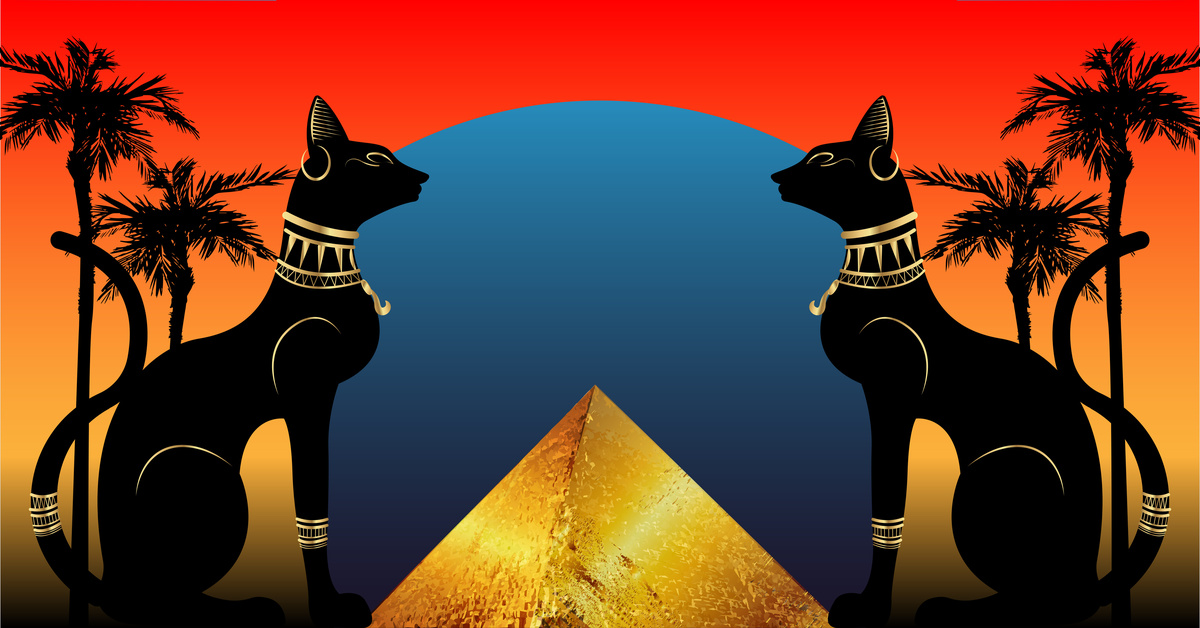
As a fierce warrior and protector of homes, the goddess Bastet has many myths in her history. Below you will learn about the most important myths of the goddess, read on and see how powerful, docile and fearless she really was.
Apep Murder
The goddess Bastet fought many times alongside her father, the god Ra, as he used to put his sons to fight. Ra had many enemies, one of them was Apep and the story of the two in Egyptian mythology means the passage of day and night and explains some other phenomena of nature.
Apep was a giant serpent known to be an agent of chaos who lived in a place in the underworld called Duat. She could cause earthquakes when she moved. Being an eternal enemy of Ra, her goal was to destroy his ship and leave the world in darkness.
The priests of Ra tried to bewitch Apep, but none of the spells worked. So Bastet assumed her feline form, having excellent night vision, and went to Apep's hiding place in the depths and killed him.
Apep's death ensured that the sun could continue to shine and crops could continue to grow, so Bastet was honored as the goddess of fertility.
Sekhmet's Revenge
The humans questioned Ra's rule and began to conspire against him. Ra then decided to take revenge and punish the traitors, so he removed his left eye and summoned the goddess Hathor. He transformed her into Sekhmet and sent her to Earth.
Sekhmet with her implacable fury destroyed all those who conspired against Ra, but she became uncontrolled and thirsty for blood. Sekhmet began to devour all men and would bring an end to humanity.
Ra was sorry and ordered 7,000 jugs of beer mixed with a red colored seed to be prepared. Sekhmet found the jugs and thought the beer was blood, she became intoxicated and so Ra was able to control her and took her back to her place.
The Origin of Turquoise
There is a myth in the city of Bubastis, which says that turquoise is actually the menstrual blood that fell from the goddess Bastet, which upon touching the ground turned into the turquoise stone.
Symbols of the Goddess Bastet
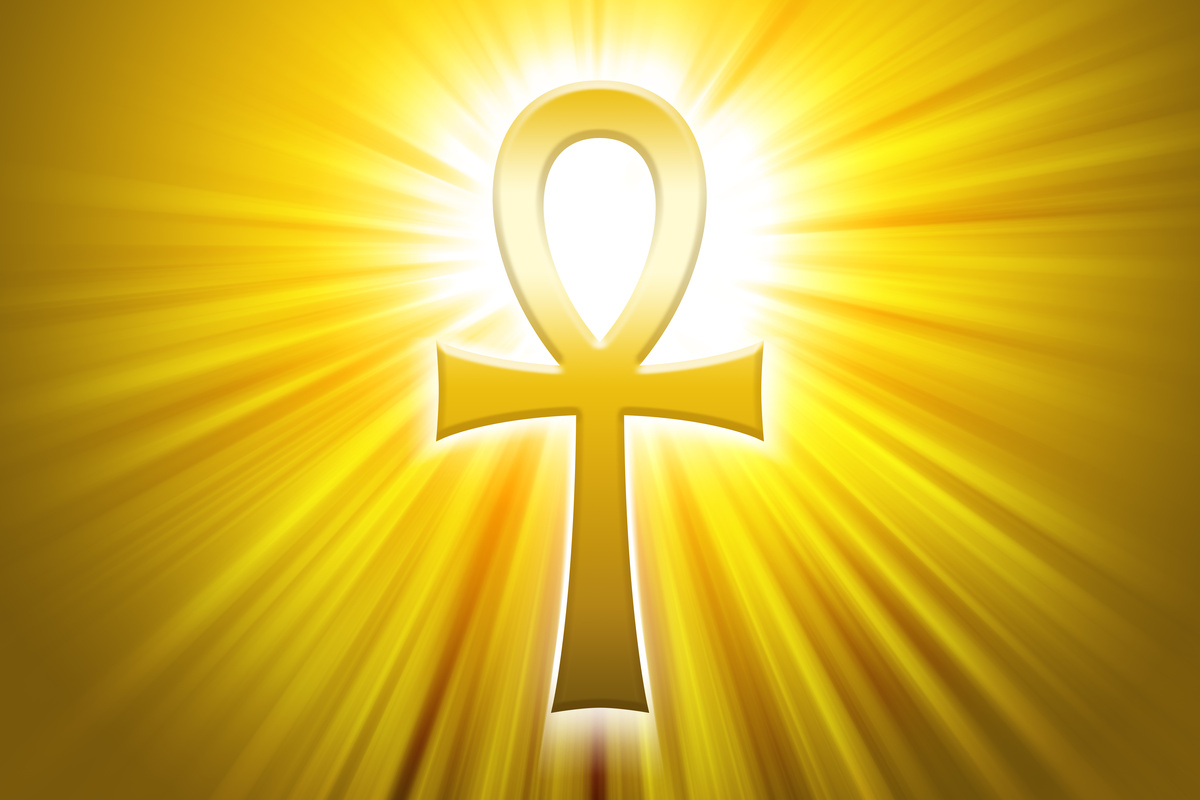
Egyptian culture is loaded with meanings and symbols. The goddess Bastet, represented by a cat, carries a lot of symbolism in her image. See below the symbols of the cat goddess, the Eye of Ra, the Sistro, the Ansata Cross and more.
Eye of Ra
The Eye of Ra was usually depicted as a disc surrounded by two snakes, it can also be depicted as a lioness or a cobra. It was as a lioness that the Eye of Ra was most closely associated visually with Bastet.
Sistro
The sistro is a very ancient instrument used in Egypt by women and priestesses. It is a percussion instrument that produces a rattling sound. The goddess Bastet is also the goddess of music and dance, so it is very common for her to appear holding a sistro.
Ankh
The Ankh or Ansata Cross is an Egyptian cross that symbolized life, in a general aspect. Other interpretations point out that it can symbolize physical life on earth, eternal life and even reincarnation.
The Ansata Cross is also considered a symbol of fertility, so it appears as a symbol of the goddess Bastet, its shape features a loop that would be the female organ and a line below symbolizing the male organ.
Tree Persea
The goddess Bastet was associated with the Persea tree, which symbolized protection and life after death. This is because Bastet lived in the Persea tree during the time when she killed Apep, according to myth.
Basket for the chicks
The basket for the chicks symbolizes the part of the goddess Bastet that is protector of the home, children and domestic life. She defends the children with her fangs and claws, keeping them under her protection in the basket.
Further information about the Goddess of Love
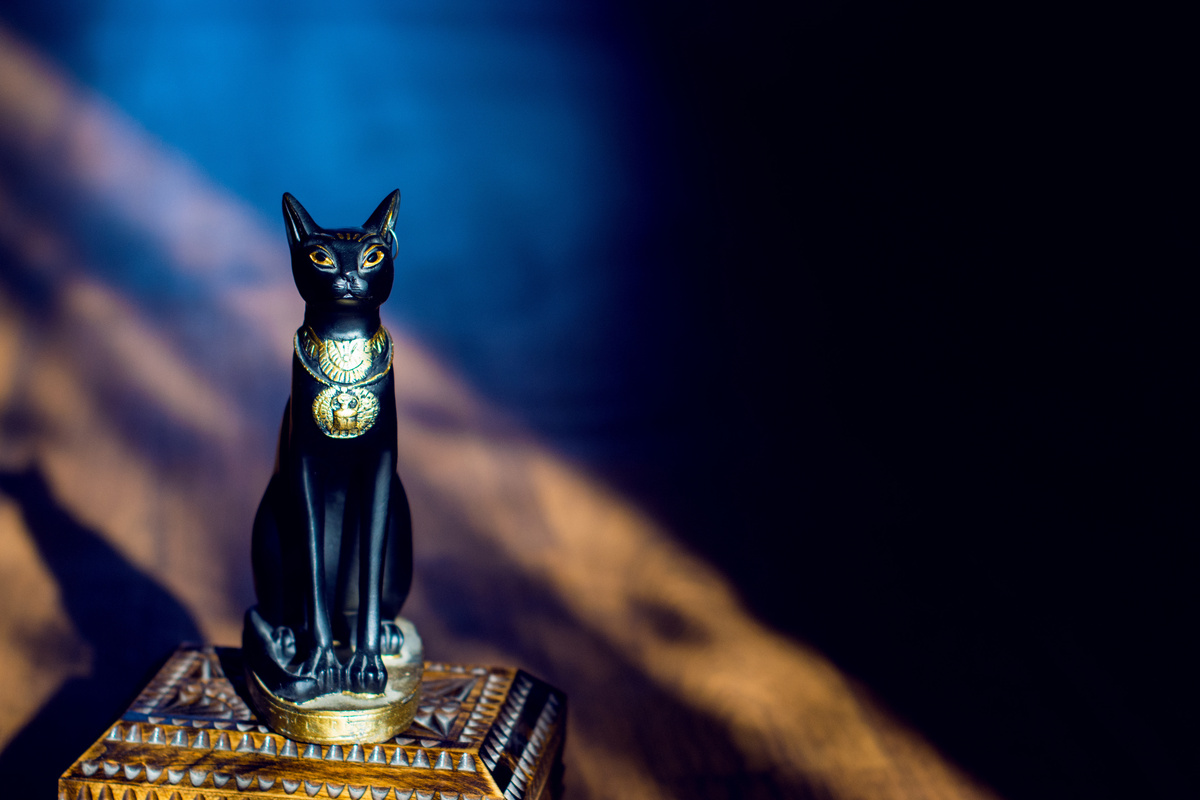
The goddess Bastet is a deity with various attributions, she is the goddess of dance, fertility, music, protector of the home and also goddess of love. Want to know how to worship the goddess cat? You will learn below all the details of their worship.
How to make an altar to the Goddess Bastet?
You can make an altar to the goddess Bastet inside your home. Place the image of the goddess on a piece of furniture, she should be surrounded by pictures of your family and your pets. Light a white or green candle and also place a censer, for when you ask for protection, light an incense that can be citronella, myrrh or 7 herbs. Ask the goddess to protect your family andcover you with your motherly love!
Prayer to the Goddess Bastet
You can connect with the goddess with the following prayer:
Hail Bastet!
Protectress of homes, motherhood, women and life!
Mistress of Joy, of Dance, of Intuition and Immortality!
Hail Bastet!
Cat goddess manifested thousands of years ago in our hearts!
We ask for your blessings!
Give us lightness in our steps;
The precision in our movements;
The ability to see beyond appearances;
The curiosity to discover fun in the simple things;
The flexibility to overcome obstacles;
The strength to share love without losing our freedom and independence;
So it always was, is and will be!
Invocation to the Goddess Bastet
The rituals and festivals in honor of Bastet were full of music, dancing and drinking, so one way to invoke her is to recreate that party atmosphere, you can do it alone or with other people, it needs to have lots of dancing, music and fun.
The Goddess Bastet is a solar deity and fertility goddess!

Really the goddess Bastet is fantastic, she has so many symbols and is patroness of the home, fertility, dance, music, love, solar and lunar divinity. Many attributes for such a powerful goddess, who can be both gentle and calm as well as wild and ruthless.
She does everything to protect pregnant women and cure diseases. Wife, mother and warrior, fighting alongside her father, god Ra, for the good of Ancient Egypt. Now that you learned everything about the goddess Bastet, from its origin to its myths, you can now ask for protection and pray to the cat goddess of Egypt. Surely she will listen to your words.

